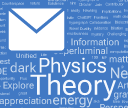It’s not easy to make a big software system that really fits together. It’s incredibly important, though. Because it’s what makes the whole system more than just the sum of its parts. It’s what gives the system limitless possibilities—rather than just a bunch of specific features.
But it’s hard to achieve. It requires maintaining consistency and coherence across every area, over the course of many years. But I think it’s something we’ve been very successful at doing with Mathematica. And I think it’s actually one of the most crucial assets for the long-term future of Mathematica.
It’s also a part of things that I personally am deeply involved in.
Ever since we started developing it more than 21 years ago, I’ve been the chief architect and chief designer of Mathematica‘s core functionality. And particularly for Mathematica 6, there was a huge amount of design to do. Actually, I think much more even than for Mathematica 1.
In fact, I just realized that over the course of the decade during which were developing Mathematica 6—and accelerating greatly towards the end—I spent altogether about 10,000 hours doing what we call “design reviews” for Mathematica 6, trying to make all those new functions and pieces of functionality in Mathematica 6 be as clean and simple as possible, and all fit together.
At least the way I do it, doing software design is a lot like doing fundamental science.
In fundamental science, one starts from a bunch of phenomena, and then one tries to drill down to find out what’s underneath them—to try to find the root causes, the ultimate primitives, of what’s going on.
Well, in software design, one starts from a bunch of functionality, and then one needs to drill down to find out just what ultimate primitives one needs to support them.
In science, if one does a good job at finding the primitives, then one can have a very broad theory that covers not just the phenomena one started from, but lots of others too.
And in software design, it’s the same kind of thing.
If one does a good job at finding the primitives, then one can build a very broad system that gives one not just the functionality one was first thinking about, but lots more too.
Continue reading



